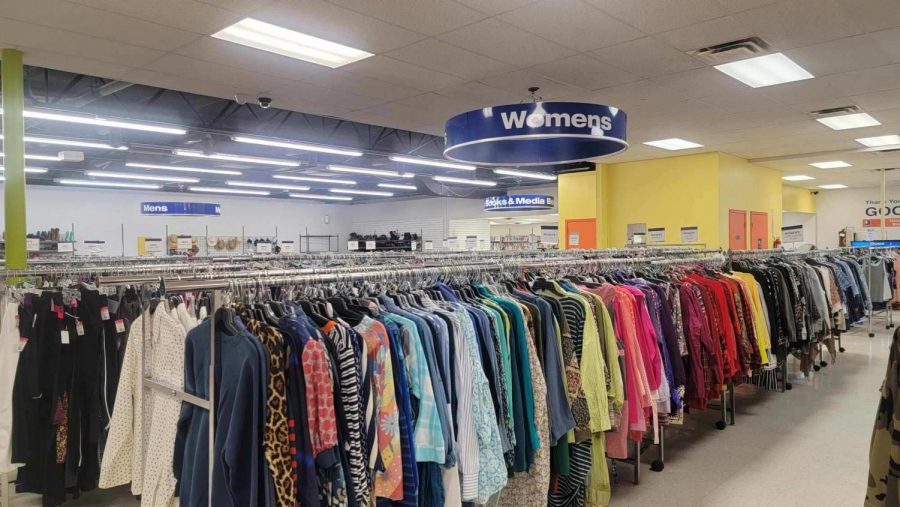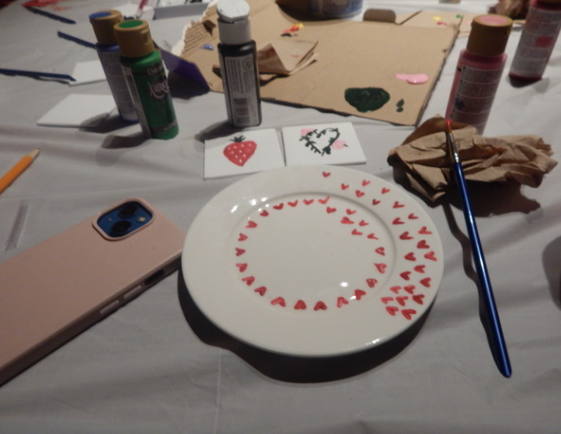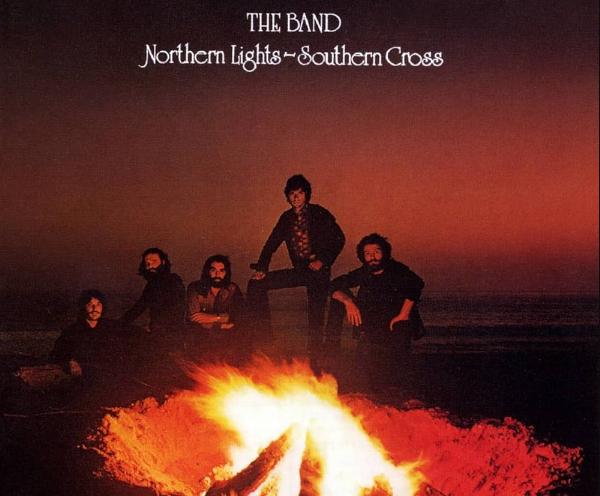Refuse-Recycle-Reuse-Resell: Thrifting teens go green
Textile waste is a rapidly growing problem in our world, increasing every year and furthering damage to the environment.
Plato’s Closet in downtown Frederick provides people with racks on racks of clothing. Allowing anyone to find their specific style or express their creativity.
How many t-shirts do you own? How many pairs of shoes? How many sweatshirts?
For me, it’s 20, 3, and 13.
Our closets are filled with clothes we don’t wear or think we “need.” And I’m a guy–girls tend to have a lot more clothing. And textile waste is a growing problem. What can we do about it? The best answer is not to buy so much clothing. In this consumer culture, that’s hard to do. The second choice is thrifting.
What is textile waste?
Textile waste is the material that becomes unusable or worthless after the end of the production process of any textile products. It entails much more than you’d think.
Spinning — Clothing — Weaving — Household textiles (rugs and sheets) Dyeing — Industrial textiles (conveyor belts and filters)
All of these branches of textile waste are as equally as important, but teens can make the biggest impact in the area of clothing waste.
Clothing waste comes from faulty/messed up clothing at the end of production and when people feel like getting rid of clothes–they are old, too small, or just not in fashion anymore. People view getting rid of clothing as a good idea, clearing up space for some new apparel to rock out in public.
In reality, this is just wrong!
Why is it a problem?
With the fashion industry being one of the most polluting industries in the world, action needs to be taken more now than ever. According to the EPA, textile waste was estimated to be 17 million tons in 2018 alone, with clothing and footwear taking up the vast majority at 13 million tons.
On a positive note, around 1.7 million tons of clothing waste was recycled in 2018.
On the other hand, the majority of the remaining 10.3 million tons end up in landfills. Clothing in landfills is a problem, since it takes 200+ years for it to decompose. Over the 200+ years of decomposition, clothing releases harmful greenhouse gases into the air, such as methane gas. Not only does it releases gases, it also releases harmful chemicals and dyes into the soil and environment.
As well as an environmental problem, clothing waste is also a economic problem–hundreds of millions of dollars are wasted because clothing is easily discarded.
New clothes need to be made. They go hand in hand in the environmental problem. Clothing production is very emission and resource intensive. Every pair of jeans that is created releases an equal amount of greenhouse gases as car driving 80 miles. 1.5 trillion liters of water are used by the fashion industry each year. Nearly a quarter of all chemicals produced worldwide are used for the textile industry. Thousands of liters of water to make a single shirt.
These are just threads in the fabric of a very big problem.
Why is thrifting for teens?
Working for a better, more healthy world is be being put in the hands of the new generations.
If you were to give a teen a list of ways to become more sustainable, they most likely wouldn’t follow through with much. It feels out of their control. Thrifting on the other hand, is trendy.
Thrifting is going shopping at a thrift store, flea market, or garage sale to purchase used items at a discounted price, in this case, clothing.
The pandemic has allowed people to wear whatever style, whenever they want to. There’s less emphasis on brands and formal or informal wear.
Thrifting isn’t only about trends; it is also a way to cut down on the amount of new clothing people purchase so not as many resources are wasted. And, it provides people with a safe way to recycle their clothing so it doesn’t damage the environment by going into landfills. So when you have clothing you no longer want, donate it to a thrift store so someone else could use it.
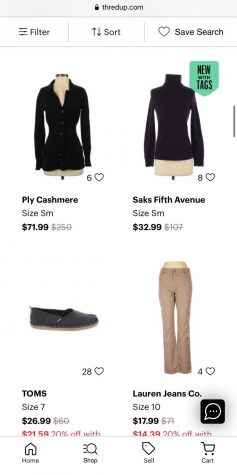
Thrift stores like Plato’s Closet, Goodwill, and others are the traditional way to thrift. From dresses to jeans to sweatshirts, thrift stores have it all catering to anyone’s specific and unique style. But it’s hit or miss on any given day.
Virtual “thrift stores” are increasing in popularity. Websites like Depop, provide a platform to people resell there used clothing.
thredUP is one of the largest online consignment sale stores, with thousands of clothing options. This is a good platform because it is very hassle-free and brings your clothing to millions of other people, increasing the odds of your clothing being purchased, compared to your local thrift or consignment store.
Students, Marissa Depalma and Abbey Sovero both enjoy going thrifting, but for different reasons.
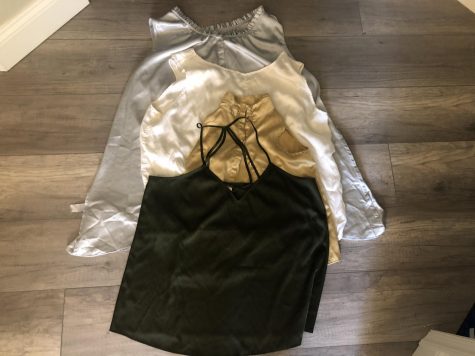
Depalma said, “I like to go thrifting for two different reasons. I want to be more proactive in helping our environment, so I don’t purchase many new clothes. The main reason though, is I enjoy expressing my creativity by purchasing clothing and being able to put pieces together, refurbish, and bring new life to the used clothing.”
Not everyone goes thrifting to refurbish old clothes into a new and improved style.
Sovero said, “I like to go thrifting because I find unique and vintage clothing and it is a way for me to help out the clothing waste problem our planet faces.”
So next time you want to get some new clothes or get rid of some old clothes you no longer wear. Think before you go to a retail store or the trash bin. Go thrifting and donate old clothes to a local thrift store or someone in need.
Your donation will support the student journalists of Linganore High School. Your contribution will allow us to purchase camera/recording equipment and software. We hope to raise enough money to re-start a monthly printed issue of our paper.


